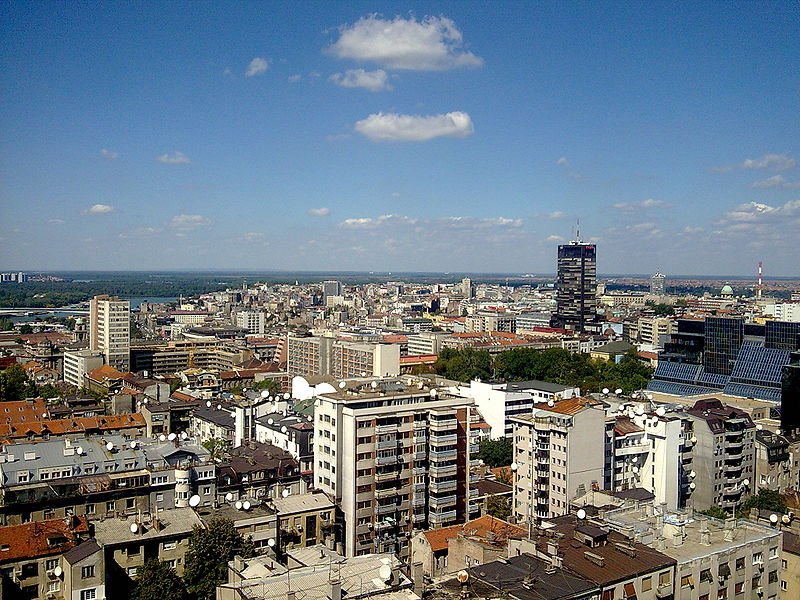 Belgrade, Serbia
Belgrade, SerbiaSource: https://commons.wikimedia.org/wiki/File:Beograd_SaTKC.jpg
Author: Bobik

Belgrade is the capital and biggest city in Serbia. The city is also the most populous city in southeastern Europe. It covers 359.96 sq km (139 sq mi) and has a population of 1.2 million people (2011 estimate), within a 3,222 sq km (1,244 sq mi) metropolitan area that has 1.7 million inhabitants.
Belgrade observes the Central Europe Time. It is an hour ahead of Coordinated Universal Time (UTC+1) and two hours during Daylight Saving Time of summer. The phone area code here is +381-11.
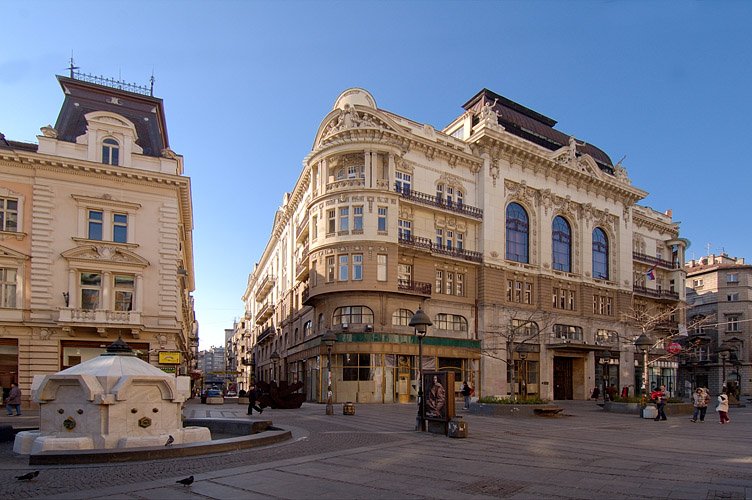 Knez Mihailova pedestrian street, Belgrade
Knez Mihailova pedestrian street, BelgradeSource: https://commons.wikimedia.org/wiki/File:KnezMihailova_ped.jpg
Author: Λατίνος
Belgrade is located at the confluence of the Sava and Danube rivers, at an elevation of 116.75 m (383 ft). Belgrade's Old Town is right where the two rivers meet, while New Belgrade is on the left bank of the Sava River. The highest point in the city is Torlak Hill, at 303 m (994 ft).
Belgrade experiences a climate that is a cross between oceanic, humid continental and humid subtropical. Its warmest months are July and August, when the average high temperature goes up to 27.3°C (81.1°F). Coldest month is January, when the temperature drops to -2.3°C (27.9°F). June is the wettest month, with 90.4 mm (3.56 in) of precipitation. You can expect some snow from December to February.
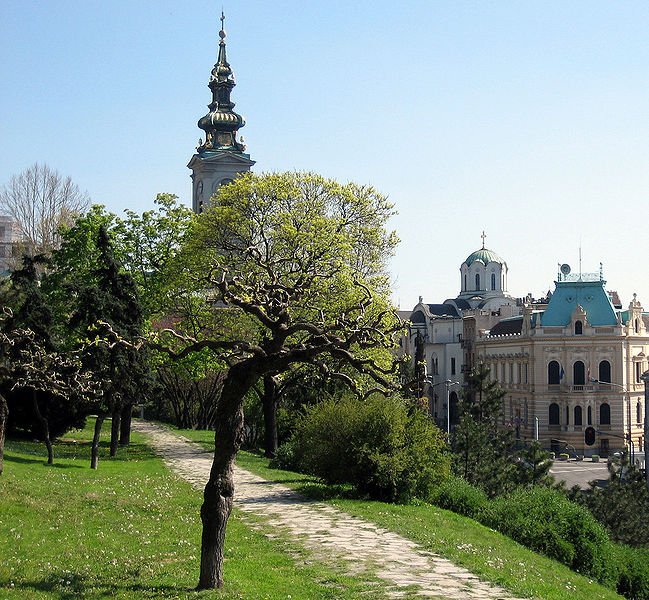 Belgrade Cathedral Church from Kalemegdan Fortress
Belgrade Cathedral Church from Kalemegdan FortressSource: https://commons.wikimedia.org/wiki/File:Vue_depuis_Forteresse_Kalemegdan.jpg
Author: Raphaëlle MARTIN

Human habitation in the Belgrade area goes back to Neolithic times. Archeologists have uncovered the Starčevo and Vinča cultures which appeared in the Balkans some 7,000 years ago. The Scordisci people, a Celtic tribe, settled in the Belgrade area in the 4th century BC. They in turn were replaced by the Romans from 34 BC. The city, then known as Singidunum, was incorporated into the Roman Empire. When the empire split into two in AD 395, Singidunum passed to the Byzantium Empire.
The name Belgrade first appeared in AD 878, as Beligrad. Its geographical location at the center of the Balkans made it a battleground for powerful neighbors, with the Byzantine Empire, the Kingdom of Hungary and the First Bulgarian Empire all waging war among one another in the area.
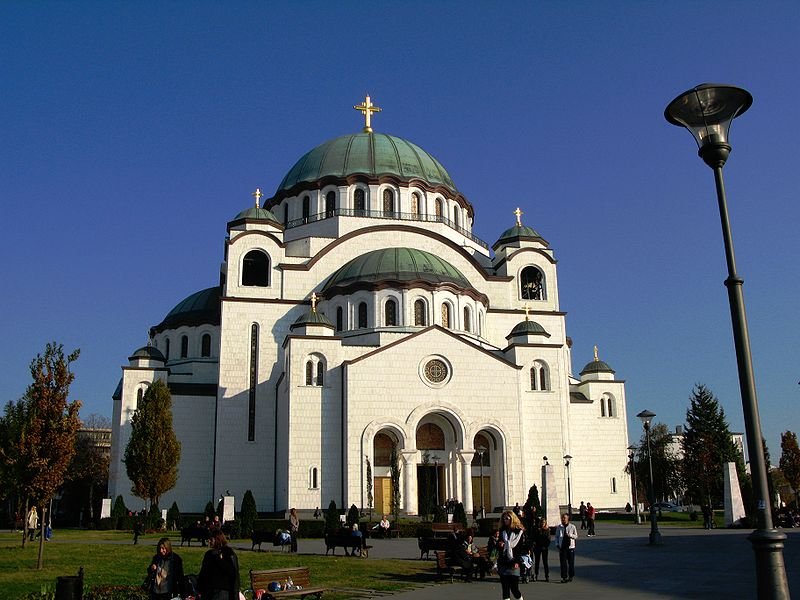 Cathedral of Saint Sava, Belgrade
Cathedral of Saint Sava, BelgradeSource: https://commons.wikimedia.org/wiki/File:Hram_svetog_Save.JPG
Author: PetarM

Belgrade was captured by the Ottomans under Sultan Suleyman the Magnificent in 1521. With its population of well over 100,000, Belgrade was the second biggest Ottoman city in Europe after Constantinople. During the Ottoman's long rule over Belgrade, it was attacked and occupied by Austrian forces three times, in 1688-1690, 1717-1739 and 1789-1791. Each time the Ottomans recaptured the city and razed it down.
When the Principality of Serbia became independent in 1878, Belgrade became its capital. The assissination of Archduke Ferdinand in Sarajevo sparked the First World War, with much of the fighting happening in Belgrade, which was greatly devastated. After the war, it was proclaimed the capital of the Kingdom of Serbs, Croats and Slovenes, later to be renamed the Kingdom of Yugoslavia in 1929.
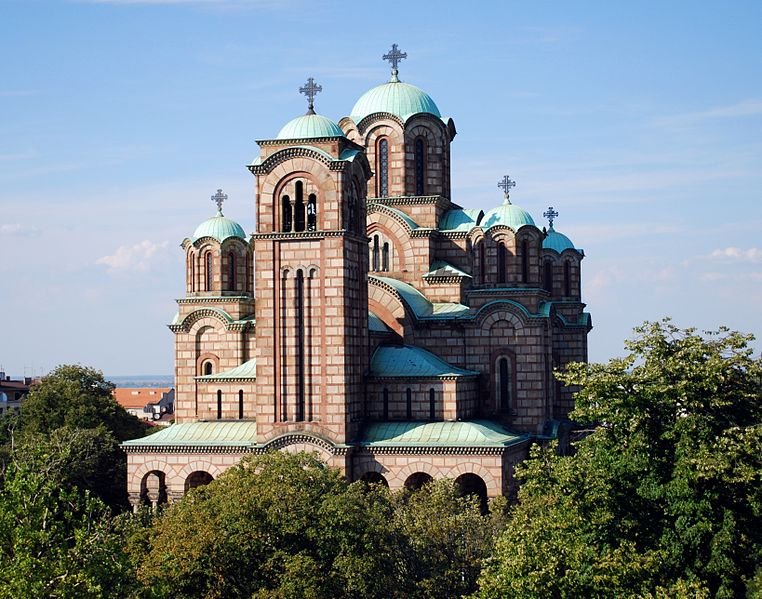 St Mark's Church, Belgrade
St Mark's Church, BelgradeSource: https://commons.wikimedia.org/wiki/File:Crkva_Svetog_Marka_u_Beogradu.jpg
Author: Dcabrilo

In the Second World War Belgrade was invaded by the Nazis and added into the Independent State of Croatia. During this period, the Jews in Belgrade suffered from genocide. The city itself underwent two rounds of bombardment, the first by the invading Axis powers and the second by the Alies, each time killing thousands. It was eventually liberated by the Red Army in 1944. The following year Belgrade became the capital of the Federal People's Republic of Yugoslavia, and in 1963, the Socialist Federal Republic of Yugoslavia.
The collapse of the Soviet Union brought liberty as well as chaos across Central and Eastern Europe. In 1991, mass demonstration erupted in Belgrade against Slobodan Milošević. Further demonstrations and unrest took place in 1996, 1997 and 2000 before Milošević was ousted. After a decade of turbulence, the city of Belgrade is finally at peace again, and gradually redeveloping itself.
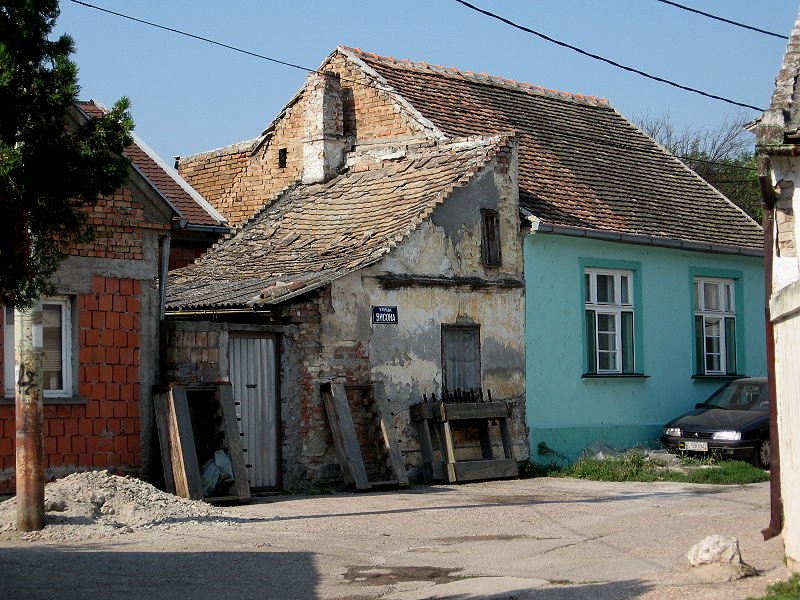 An old house in downtown Zemun, Belgrade
An old house in downtown Zemun, BelgradeSource: https://commons.wikimedia.org/wiki/File:Zemun_old_house.jpg
Author: Lumen roma

Visiting Belgrade, Serbia
The Belgrade Nikola Tesla Airport (BEG) is the gateway to the city. It is located 12 km to the west of downtown Belgrade. Arriving here, you can take the E7 minibus to Kralja Aleksandra Boulevard in downtown Belgrade. The fare is 120 dinars, payable on board. Alternatively, public bus 72 goes to Zeleni Venac in downtown Belgrade and costs 100 dinar for the 50-minute trip.If you opt to take the taxi, avoid touts at the arrival hall. Book your taxi from the dispatch officers wearing yellow vests. Your fare to most places within Belgrade should be around 1500 dinars. There have been cases of taxi drivers ripping off passengers, saying the taxi voucher is good for only one passenger. Take a different taxi if you do not agree with the driver.
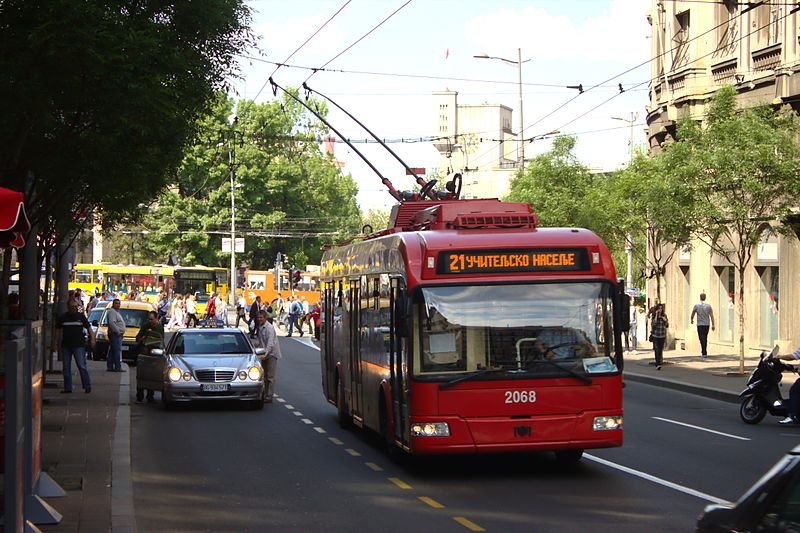 Trolleybus in Belgrade
Trolleybus in BelgradeSource: https://commons.wikimedia.org/wiki/File:B%C4%9Blehrad,_Kolar%C4%8Deva,_trolejbus_II.jpg
Author: Aktron

Exploring Belgrade
The public transport of Belgrade comprises buses, trolleybuses and trams. They all use the same tickets which can be purchased from kiosks in the city or direct from the driver. Note that buying from the driver will be twice the price.Places of Interest in Belgrade, Serbia
- Cathedral of Saint Sava
- Ethnographic Museum
- Fresco Gallery
- Kalemegdan Fortress
- Nikola Tesla Museum
- Orthodox Cathedral
- Palace of Princess Ljubica
- Skadarlija
- St Mark's Church
- The Royal Compound
- Tito's Mausoleum and the 25th May Museum
- Vuk and Dositej Museum
- Zemun
 Latest updates on Penang Travel Tips
Latest updates on Penang Travel Tips
 Discover with Timothy YouTube Channel
Discover with Timothy YouTube Channel
 PG Food Channel
PG Food Channel
 Learn Penang Hokkien YouTube Channel
Learn Penang Hokkien YouTube Channel
 SojiMart Videos
SojiMart Videos
Latest from Discover with Timothy: Gurney Bay - what to see and do there
About this website

Hello and thanks for reading this page. My name is Timothy and my hobby is in describing places so that I can share the information with the general public. My website has become the go to site for a lot of people including students, teachers, journalists, etc. whenever they seek information on places, particularly those in Malaysia and Singapore. I have been doing this since 5 January 2003, for over twenty years already. You can read about me at Discover Timothy. By now I have compiled information on thousands of places, mostly in Peninsular Malaysia and Singapore, and I continue to add more almost every day. My goal is to describe every street in every town in Malaysia and Singapore.
Robbie's Roadmap
- Episode 1: Robbie's Journey to Financial Freedom
- Episode 2: Lost in America
- Episode 3: The Value of Money
- Episode 4: The Mentor
- Episode 5: The Thing that Makes Money
- Episode 6: The walk with a Billionaire
- Episode 7: The Financial Freedom Awakening
- Episode 8: Meet Mr Washington
- Episode 9: The Pizzeria Incident
Copyright © 2003-2024 Timothy Tye. All Rights Reserved.


 Go Back
Go Back